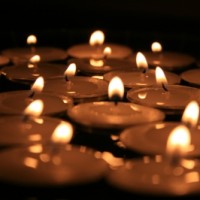Flick off the overhead lights. Light a candle. Turn on a lamp or two and sit. It’s 7pm in November and dark outside (at least in the Northern Hemisphere). It’s dim and cozy inside and your body and mind relax. Fast forward to 2pm tomorrow. Bright sunlight outdoors; bright inside. You’re energized and ready for action. Close the shades, turn off the lights, light a candle or two. Hmm, doesn’t feel right. Why? Our bodies are programmed to ebb and flow based primarily on our circadian rhythms (how our body acts and reacts based on external cues).
Our bodies want to synchronize with our environment. As the sun rises, our bodies rev up, and as it sets, we do the same. Or so the theory goes.
How about nurses on the night shift, exposed to bright fluorescent light for the 12 hours when their bodies want to sleep? How about children in a school midday with little natural light and dim indoor lighting? Neither is ideal.
Enter circadian lighting. This is the latest and greatest in lighting technology and design. We can buy bulbs that simulate the type of light emitted from the sun naturally at different times of day. We can put our lighting systems on timers that brighten the lights early morning and midday and dim as afternoon turns to dusk. While we can’t control darkness or brightness outside from weather fluctuations or the changing seasons, we can manipulate our built environment in a way that enhances our health and well-being. Improved lighting not only enhances human health, it also improves alertness, productivity and sleep and has the potential to reduce hospital stays. Tweaking our lighting even a little can have a significant impact in many applications…from home to school, from work to healthcare.
For what to do if a change in lighting is not in your budget or you work or study in an environment where you can’t control the lighting, stay tuned…
photo source: darren robertson/freedigitalphotos.net
Back to Blog
